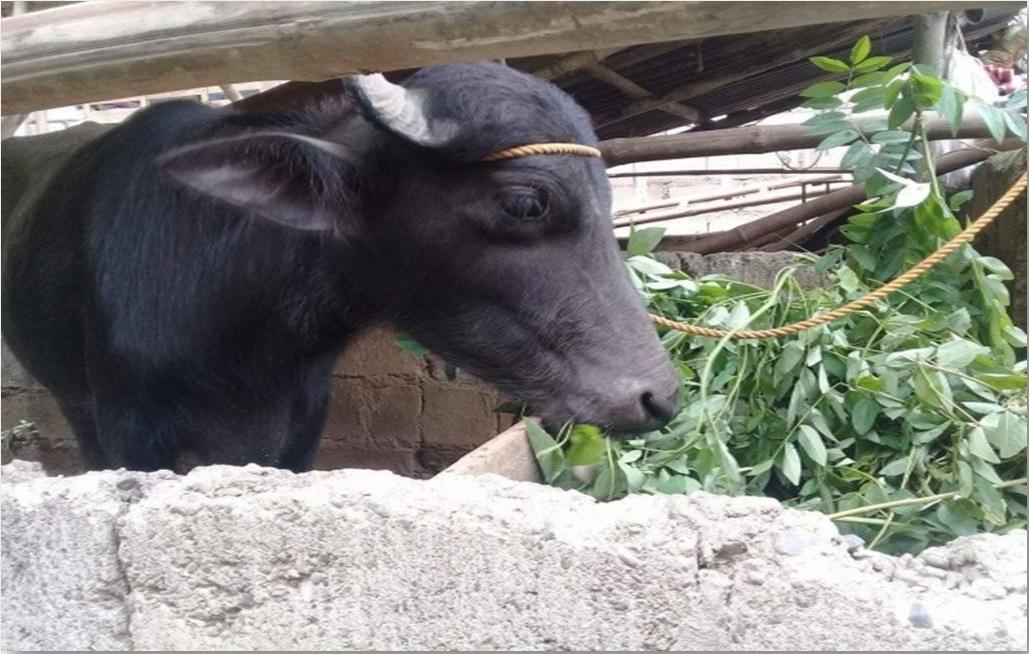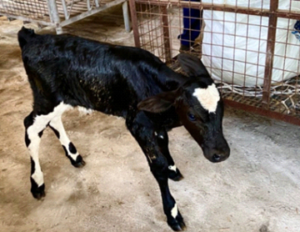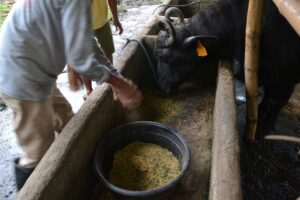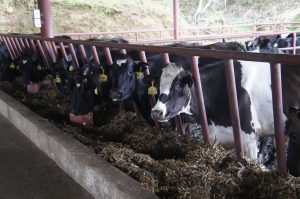
Dairy Industry Profile
The National Dairy Authority (NDA) reported that the dairy sub-sector, which includes carabao/buffalo, dairy cattle and dairy goat, contributed 16.8% to the total Philippine agricultural value. In 2021, PSA reported the total dairy production of 26.3 thousand MT which is grossed at current prices amounting to Php 1.408 billion, as the dairy sub-sector recorded an uptrend in gross earning with 16.7% growth. The increases in value were 22.1%, 18.5%, and 14.6% for buffalo, cattle, and goat, respectively. However, the Philippines only produces 1% of its 2.5 billion liter milk demand, as reported by NSA, which leads the country to import 99% of the dairy products.
The Philippines has four main types of dairy farms which are individual smallholder producers, smallholder cooperatives, commercial farms, and government farms (i.e. Philippine Carabao Center and State Universities). Smallholder farmers with an average of 2-4 heads mainly comprise the dairy industry in the country. There are dual-purpose breeds, which are used for both dairy and meat production, and there are improved dairy breed animals which are mainly used for dairy production. Milk is the most important product from dairy farming. Some farmers sell the milk from their farms to cooperatives or local milk processors, which then produce various dairy products such as pasteurized fresh milk, flavored milk, cheeses, ice cream, fermented milk, and confectioneries.
Problems in the Industry
There is not enough local dairy supply to meet the local demand. Hence, the Philippines needs to increase the dairy industry’s competitiveness for the country to rely less on imports, and minimize the current trade deficit. The milk production is highly affected by poor feed and management practices, high production costs and lack of adequate dairy infrastructure. Other problems faced by the industry are water scarcity, poor mechanization, low reproductive efficiency, and the high wastage due to the high perishability of milk.

ISP for Dairy
The PCAARRD Dairy ISP targets to increase average daily milk production for daily buffalo and dairy cattle, increase lactation period, decrease breeding period and decrease calving intervals, and reduce milk wastage and/or spoilage.
Strategic R&D
Strategic R&D is DOST-PCAARRD’s banner program comprising all R&D activities that are intended to
generate outputs geared towards maximum economic and social benefits
Establishment of Dairy Cattle Foundation Breeder Herd through Embryo Transfer (ET) using Imported Pedigreed Frozen Embryos
PagAsa is the first calf produced through Embryo Transfer technology that used fresh embryo from a Girolando donor cow. The...
Read MoreTechnologies
Products, equipment, and protocols or process innovations developed to improve productivity, efficiency,
quality, and profitability in the agriculture and aquatic industries, and to achieve sustainable
utilization and management of natural resources
Feeding Protocols and Practices
Development and Testing of Complete Nutrient Diet (CND) for Growing and Dairy Buffalo Complete nutrient diet (CND) is the feed ration developed to meet the nutrient requirement of an animal...
Read MoreCapacity Building
Capacity building efforts of DOST-PCAARRD seek to develop and enhance the R&D capabilities of researchers
and academic or research institutions through graduate assistantships & non-degree trainings
and development and/or upgrading of research facilities
Policy Research & Advocacy
Analysis of policy concerns and advocacy of science-informed policies ensures that the AANR policy environment is conducive for S&T development
and investments

No posts found!
Market Advisory
Market-related advisory services that are product of market scanning done by continually and actively monitoring the external environment in order to identify customer needs, anticipate competitive actions, and, identify technological changes which may provide new market opportunities or market disruptions. The advisories provide a variety of information, including selection of market outlets, emerging demand, technological advances, and potential business partners, among others.
To be able to run their business as a modern venture, clients will be provided with information to adapt/respond to market change based on changing market conditions and opportunities. The emerging demand/trends may have direct effect on both demand for skills improvement and the competencies needed to promote market-oriented enterprises.
Challenges and Shifts in Philippines’ Livestock Industry: Production, Imports, Price
Explore the latest updates on the Philippines’ livestock industry: production...
Read MoreLivestock Output Optimism and Stable Retail Prices Amid Feed Shortages:
This article discusses the optimistic outlook for livestock output and...
Read MoreBird Flu Alert, Rabies Outbreak, and Swine Industry Initiatives
Livestock and poultry face threats from bird flu and rabies...
Read More















